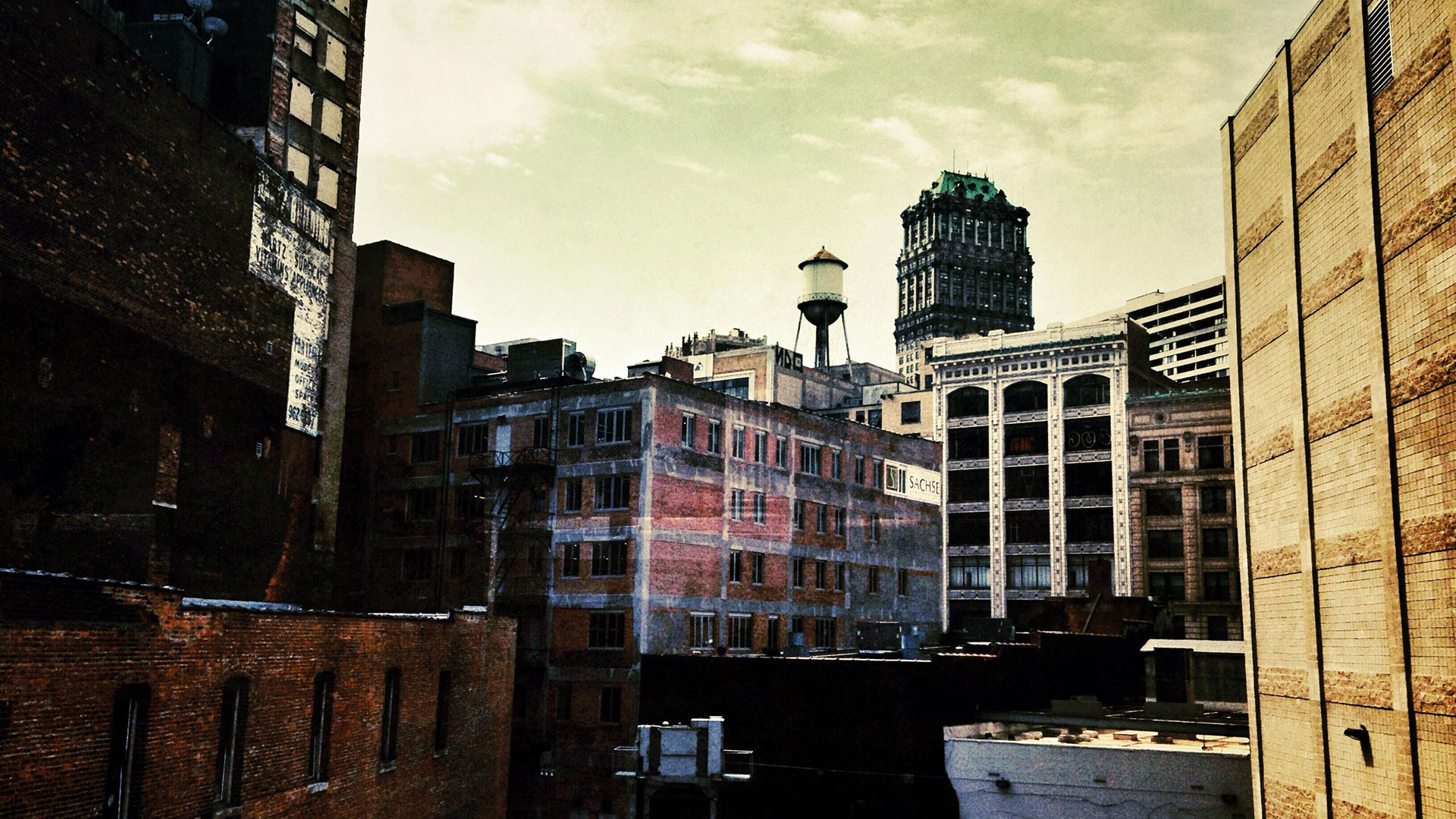

Though he’s only 31, Aaron Foley is one of the sharpest writers on the subject of contemporary urban affairs. His essays on questions of race, class, gentrification and privilege are unique in their careful dissection of the issues, and their refusal to rest on standard responses. So it’s at once no surprise, and a great asset, that he comes from my hometown of Detroit, where all of these issues are currently paramount.
In the interest of aiding all of Motown’s neophytes, Aaron just published his first book, a wry piece of instructive non-fiction titledHow to Live in Detroit Without Being a Jackass. Aaron also acts as editor of local African American life, arts, and culture magazine,BLAC, and has done stints at Ward’s, Jalopnik and writing copy for Ford’s ad agency, so he’s a bona fide car guy too.
Since I was coming to town—along with 5,000 of my fellow journalists and a million other visitors—to attend Detroit’s North American International Auto Show, I asked Aaron if he would riff on his book and provide visitor’s guide for local tourists.
I wanted a list of bars, shops and restaurants that combined his insider knowledge, hometown pride and balanced eye, and wasn’t the kind of Shinola hipster bullshit that the New York Times and every other coastal publication runs when talking about the Motor City’s alleged resurgence. As always, Aaron delivered. So while you’re in town, add these hotspots to your lists.

Cutter’s: The locals flew into a tizzy recently when a restaurant in one of the more well-to-do suburbs announced it would be serving $55 hamburgers adorned with foie gras and truffles. But everyone in town knows the best of the best burgers are served at this dive, tucked in among produce distributors in the city’sEastern Market—the largest outdoor farmer’s market in the country, by the way. While you’re there, try someFaygo, the pop (not soda) company headquartered just a few miles away.

Honest John’s: A standby in the last remaining dregs of Cass Corridor, a rapidly changing (but don’t say gentrifying, because gentrifiers don’t like to be called gentrifiers) neighborhood whose free-spirited creative spaces are being replaced with expensive leather-goods shops and fair-trade coffee shops. Despite its everyman ambience, Honest John’s has one of the better bar menus in the city (the Hani John, a chicken pita, is a favorite) and a, well, honest Sunday brunch that’s perfect for your hangover.

Dakota Inn Rathskeller: So it’s a bit off the beaten path. You’ll have to go up Woodward, past the sadly decrepit Model T factory (in the even more crumbling suburb-within-a-city Highland Park), through a historic neighborhood adjacent to a blighted one before getting to this place, a tried-and-true Bavarian restaurant with authentic fare and all German brews. Reubens! Potato salad! Strudel! Bring your German car; there’s a secure parking lot.
Dearborn: Dearborn may be home to Ford’s corporate HQ, but it’s also home to the largest Middle Eastern population outside the Middle East itself. That means a variety of high- and low-end Middle Eastern dining establishments, fromDearborn Meat Market (have a kebab stick right in front the butcher’s counter) toNew Yasmeen Bakery (a cafeteria-style joint with a wide variety of sweets and savors) toCedarland (homestyle dining with heaping portions of everything).

Hamtramck: Hamtramck was a settlement for Polish and other Eastern European immigrants back in the day, birthing many Polish restaurants, shops and stores (Polish Village Café is one of my favorites.) Then came the hipsters, attracted to lower costs of living, making it possible for them to open vintage shops and record stores. But in recent years, South Asian—particularly Bangladeshi—and Middle Eastern immigrants have redefined the northern end of town. (Aladdin Sweet Café is delicious local spot.) It makes for an eclectic mix, hearing the Muslim call to prayer alongside Catholic Church bells while an aspiring punk band practices next door to your AirBNB.

Rust Belt Market: If there’s one thing Detroiters love, it’s gifting each other with authentic Detroit souvenirs. A nod to the area’s manufacturing heritage, Rust Belt lets local artists, metalworkers, pastry chefs—whoever—set up shop and sell whatever goods they cook up. Take home a T-shirt with a clever Detroit saying, and take two more for the kids.

Detroit Moped Works: Down in Southwest Detroit, a couple of guys turned an old storefront into the city’s de facto largest collection of vintage mopeds, taking barn finds, dead stock found on Craigslist and other discoveries, fixing them up in the back and putting them up for sale. We’re still the Motor City, even if that motor is just a 50 cc. And while you’re in the area, try the upscaleEl Barzón around the corner, a half-Mexican, half-Italian (sometimes both based on what you order) restaurant.
Baker’s Keyboard Lounge: Perhaps the oldest continuously operated jazz club in the country (at least that’s what local historians claim), all the greats have cut their teeth here at some point. The last stop on Detroit’s resurgentAvenue of Fashion (or first, depending on which direction you’re traveling), it’s not unusual to spot a local celebrity in this low-lit lounge with a speakeasy feel.